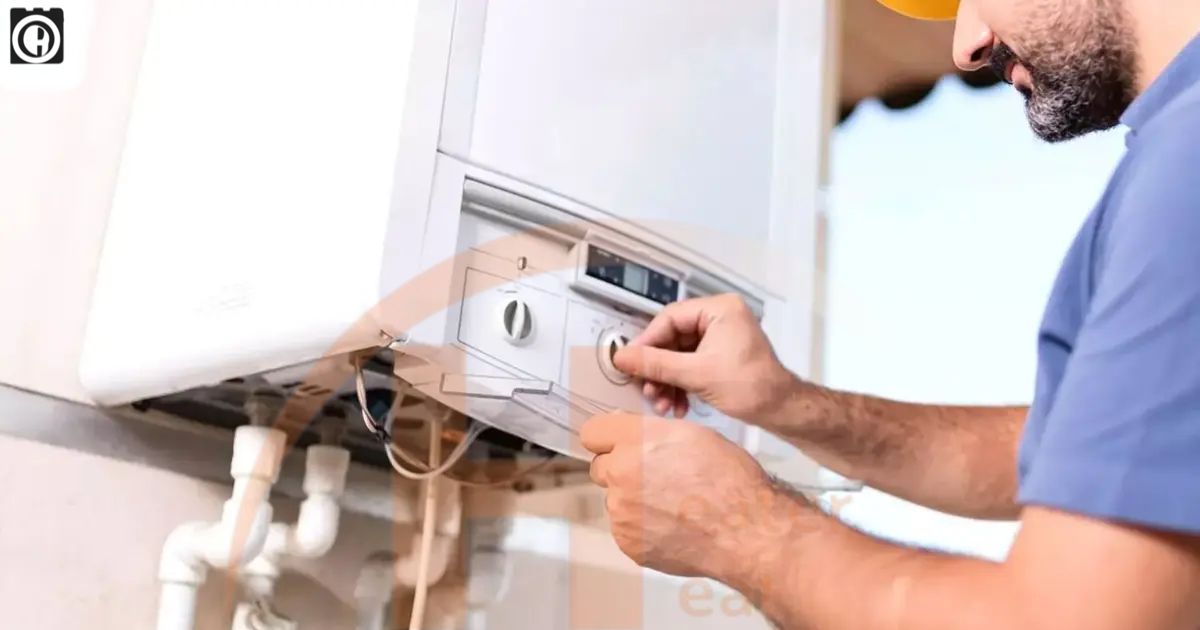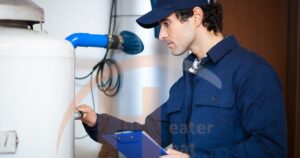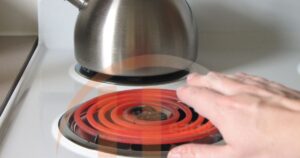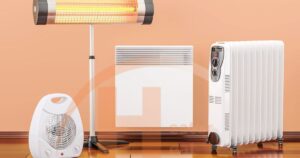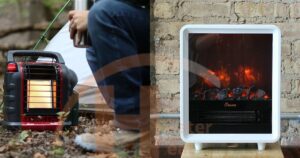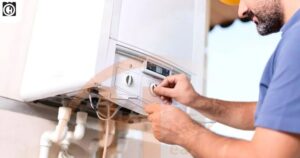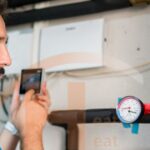An electric water heater, a vital home appliance, is designed to provide a continuous supply of hot water for various domestic needs. Operating on electricity, these devices use heating elements to elevate the water temperature, ensuring comfort in daily tasks such as bathing, cleaning, and dishwashing.
Imagine stepping into the shower anticipating a warm embrace of water, only to be greeted by an icy shock. Do you find yourself puzzled by the frequent shutdowns of your electric water heater? Fear not! In this exploration, we embark on a journey to demystify the reasons behind these sudden disruptions and empower you with the know-how to bring back the warmth.
Before we dive into the intricacies, let’s acknowledge that a hiccup in your water heater’s performance isn’t necessarily a sign of impending doom. Often, it’s a matter of understanding the components at play and tackling issues head-on. By the end of this guide, you’ll not only troubleshoot effectively but also grasp the importance of regular maintenance in keeping your electric water heater in top-notch condition.
How Electric Water Heaters Work

Electric water heaters, the unsung heroes of our homes, operate on a straightforward yet ingenious principle. Within the heater’s tank, you’ll find one or more heating elements—typically made of durable materials like stainless steel. When you turn on the hot water tap, an electric current passes through these elements, converting electrical energy into heat.
As the water circulates these elements, it gradually warms up, reaching the desired temperature set on the thermostat. This continuous process ensures a steady supply of hot water whenever you need it. Consider the thermostat as the conductor orchestrating this symphony of warmth. It acts as the control center, monitoring the water temperature and signaling the heating elements to either kick in or take a pause.
The thermostat keeps the water temperature within the specified range, preventing scalding or lukewarm disappointments. When you marvel at the comforting warmth of your shower or the ease of washing dishes in hot water, remember that it is the coordinated dance of heating elements and a vigilant thermostat that makes it all happen.
The Dance of Heating Elements
Delving deeper into the heart of your electric water heater, the heating elements play a pivotal role in this heat-producing spectacle. These robust components, usually located at the bottom and sometimes at the top of the tank, are immersed directly in the water. As the electrical current courses through them, they generate heat, raising the water temperature to the desired level.
Over time, sediment buildup can occur, acting as a barrier between the heating elements and the water. This interference can lead to reduced efficiency and, eventually, frequent shutdowns. Regular maintenance, including flushing the tank to remove sediment, is key to keeping these elements in their prime performance. Beyond the mechanical ballet of heating elements, the electric water heater relies on a simple yet effective mechanism.
When you turn on the hot water tap, cold water enters the tank, displacing the hot water being used. The thermostat detects this drop in temperature and signals the heating elements to reignite, ensuring a constant supply of hot water. This cyclic process continues seamlessly, providing the warmth that makes our daily tasks more comfortable and enjoyable.
Water Heater’s Thermostat
If the heating elements are the performers in the water-heating symphony, then the thermostat is undoubtedly the maestro directing each nuanced note. Acting as the brain of the operation, the thermostat is responsible for maintaining the water temperature within the desired range. It achieves this by signaling the heating elements to turn on or off based on the current temperature.
This dynamic control ensures not only a consistent supply of hot water but also prevents energy wastage by only activating the elements when needed. Think of the thermostat as the vigilant guardian of your comfort, preventing scalding temperatures while ensuring your water is hot enough for your needs.
Like any conductor, the thermostat can sometimes lose its precision. Calibration issues or aging components may lead to inaccurate temperature readings, causing disruptions in the heating process. Fortunately, recalibrating or replacing the thermostat is a manageable task, ensuring your electric water heater continues to deliver its warming symphony.
12 Common Reasons Your Water Heater Keeps Shutting Off
When your reliable water heater transforms into an intermittent troublemaker, it’s essential to decode the underlying issues. Let’s explore three common culprits – overheating, water leaks, and wiring issues – to understand why your hot water oasis might be experiencing disruptions.
Overheating
Envision your electric water heater as an eager chef, aiming to serve the ideal temperature. Yet, similar to an unattended pot on the stove, overheating disrupts this delicate equilibrium. When the thermostat falters, it fails to control the water temperature, resulting in excessive heat.
This, in turn, activates the high-limit switch—an essential safety feature designed to shut off the heater, preventing scalding or damage. Common culprits for overheating encompass a malfunctioning thermostat, sediment accumulation, or issues with the high-limit switch.
Solution
- Faulty heating elements can lead to overheating; inspect and replace if needed.
- Regularly flush the tank to remove sediment buildup, preventing overheating.
- Ensure the high-limit switch is functioning correctly; replace it if necessary.
- Lower the thermostat settings to a safe and comfortable temperature.
Water Leaks

Water leaks in your electric water heater as a slow, persistent drip, gradually erodes the reliability of your appliance. These leaks may originate from diverse sources such as loose connections, valve problems, or corrosion. If left unaddressed, prolonged leaks can result in water damage, compromised efficiency, and potential safety hazards.
Identifying and promptly addressing the sources of leaks is crucial for maintaining the functionality and safety of your water heater. Regular inspections and proactive measures can prevent these small drips from escalating into significant problems, ensuring a consistent and secure hot water supply.
Solution
- Ensure the temperature and pressure relief valves are functioning; replace them if faulty.
- Regularly check for any loose or damaged connections and tighten or replace them.
- Corroded tanks or pipes can lead to leaks; promptly address any signs of corrosion.
- Place a drain pan under the water heater to catch minor leaks.
Wiring Issues
Visualize your electric water heater’s wiring as the intricate network responsible for maintaining the appliance in perfect sync. However, when wiring issues arise, this harmony is disrupted, leading to unexpected shutdowns.
The culprits behind this disruption often include faulty wiring, loose connections, or damaged electrical components, all of which impede the smooth flow of electricity to the heating elements. These wiring issues manifest in various ways, ranging from inconsistent heating to frequent shutdowns, potentially jeopardizing the reliability of your electric water heater.
Solution
- Ensure your water heater has a dedicated circuit to prevent overloads and wiring issues.
- Ensure all electrical components, such as heating elements, are in good condition.
- Older homes may have outdated wiring; upgrade to meet the electrical demands.
- Regularly check for loose or damaged wiring connections and tighten them.
Dirt and Clogs
Consider your electric water heater as a comforting stream of warmth, yet the presence of dirt and clogs can introduce obstacles that disrupt this soothing flow. As time passes, sediment and debris gradually gather at the tank’s bottom, creating insulation around the heating element. This insulation becomes a hindrance, impeding efficient heat transfer.
Consequently, this obstruction can lead to overheating, a decline in overall efficiency, and eventual shutdowns. The impact of sediment buildup should not be underestimated, as it not only affects the performance of your electric water heater but also poses the risk of long-term damage.
Solution
- If your water is prone to sediment buildup, a water softener can reduce mineral deposits.
- Place a sediment filter on the water intake to trap particles before they reach the tank.
- A corroded anode rod can contribute to sediment buildup; replace it if necessary.
- Schedule regular flushing of the tank to remove sediment and prevent clogs.
Electrical Issues

Envision the operation of your electric water heater as a symphony, where electrical issues act as discordant notes. When crucial components malfunction, it disrupts the harmony. Picture an on-off switch as the conductor, swiftly restoring order to the melody by addressing and isolating the disruptions.
The manifestation of these issues includes unpredictable heating patterns or, in severe cases, complete shutdowns. The origins of such disruptions can often be traced back to wear and tear, manufacturing defects, or the aftermath of power surges.
Solution
- Regularly Inspect thermostats for accurate temperature readings; replace if needed.
- Ensure a stable power supply to prevent fluctuations that can damage components.
- Ensure heating elements have continuity using a multimeter; replace faulty ones.
- Install surge protectors to safeguard the water heater from electrical surges.
Tripping Breaker
The tripping of the breaker serves as a crucial indicator of an electrical overload or a short circuit, acting as a safety mechanism to cut power and prevent potential hazards. However, when this protective measure occurs too frequently, it raises concerns about the underlying health of your electric water heater system.
Frequent breaker tripping may be symptomatic of various issues, including faulty wiring, damaged heating elements, or an overloaded circuit. Each instance of tripping should be seen as a signal for a thorough inspection, as addressing the root cause promptly is essential for maintaining the reliability and safety of your water heater.
Solution
- Disconnect other appliances on the same circuit to reduce the load on the breaker.
- Inspect wiring for exposed or damaged areas that may be causing a short circuit.
- Ensure your water heater has a dedicated circuit to prevent interference.
- If breaker trips persist, seek the expertise of an electrician.
Sediment Buildup
Imagine the serene corners of your electric water heater as places where sediment quietly accumulates, creating a disturbance in the tranquility of efficient heating. Composed primarily of minerals and debris from the water supply, sediment settles discreetly at the tank’s bottom, creating an insulating layer around the heating element.
This seemingly innocuous buildup serves as a silent disruptor, hindering the efficient transfer of heat and giving rise to issues such as overheating, decreased overall efficiency, and, eventually, system shutdowns. The impact of sediment buildup extends beyond mere disruption; it poses a potential threat to the long-term health of your electric water heater.
Solution
- Adopt a routine schedule for flushing the tank to expel sediment and prevent buildup.
- Add a sediment filter to the water intake, preventing particles from reaching the tank.
- A corroded anode rod can contribute to sediment accumulation; replace it if needed.
- Lower the thermostat temperature to reduce the likelihood of sediment solidifying.
Faulty Thermostat

Envision the choreography of your electric water heater’s performance, where the thermostat assumes the pivotal role of dictating the tempo of heat production. Positioned at the center stage, it orchestrates the harmony of your appliance’s functionality. When a faulty thermostat enters the performance, it disrupts the rhythm by misreading temperatures.
This misinterpretation can result in erratic heating, providing insufficient warmth, or triggering unnecessary shutdowns. The origins of these disruptions often lie in factors such as wear and tear, calibration discrepancies, or underlying electrical malfunctions. Recognizing the signs of a malfunctioning thermostat is crucial to maintaining the seamless performance of your water heater.
Solution
- Regularly test the thermostat’s accuracy using a thermometer and adjust if necessary.
- Ensure the thermostat is in a proper location away from external heat sources.
- Periodically calibrate the thermostat to ensure accurate temperature readings.
- If calibration doesn’t resolve the issue, consider replacing the thermostat.
Faulty Heating Coil
Consider your electric water heater’s heating coil as the beating heart, entrusted with the crucial task of warming the water that flows through your taps. However, when this vital component falters, it introduces disruptions in your hot water supply.
A malfunctioning heating coil can manifest in various ways, from irregular heating patterns and prolonged heating times to complete shutdowns. These issues may stem from common culprits like wear and tear, sediment buildup, or even manufacturing defects. Addressing a faulty heating coil promptly is essential to ensure the consistent and reliable flow of hot water.
Solution
- Examine the heating coil for visible signs of damage, such as corrosion or disintegration.
- If damage is evident, consider replacing the heating coil with a compatible replacement.
- Flush the tank to prevent sediment buildup, which can impede the coil’s efficiency.
- An inconsistent output may indicate a heating coil issue.
Pilot Light Problems

The pilot light, akin to a guiding flame, serves as the initiator of the heating process within your electric water heater. Despite its small size, this crucial element plays a pivotal role, and when it encounters problems, it can result in intermittent or, in some cases, no hot water.
Issues with the pilot light often manifest in common scenarios such as extinguishment, irregular flames, or difficulty in maintaining a steady, lit state. Recognizing and addressing pilot light issues promptly is vital for sustaining the continuous and reliable supply of hot water from your heater.
Solution
- Check the pilot light for a consistent, steady flame; irregularities may indicate problems.
- Confirm a steady gas supply, addressing interruptions that may affect the pilot light.
- Assess the thermocouple; a faulty thermocouple can cause the pilot light to go out.
- Ensure the orifice is free from debris or soot, hindering the pilot light’s function.
Age of the Water Heater
As your electric water heater ages, it transforms akin to a seasoned performer facing the inevitability of a slowing tempo and occasional off-notes. The aging process introduces various challenges, including diminished efficiency, heightened energy consumption, and increased vulnerability to malfunctions.
Critical components such as the heating elements, anode rod, and thermostat may undergo wear and tear, significantly impacting the overall performance of the electric water heater. Understanding the implications of an aging water heater is essential for proactive maintenance and timely replacements.
Solution
- Opt for energy-efficient models to improve performance and reduce operating costs.
- If the heater is approaching the lifespan warranty, consider investing in a new one.
- Conduct routine inspections to assess the overall condition of the water heater.
- Replace worn-out components, such as anode rods, to restore efficiency.
Damaged Heating Elements

Consider the heating elements in your water heater as virtuosos, skillfully producing the delightful warmth that enriches your daily routines. However, when these essential components become damaged, they disrupt the harmonious performance, resulting in issues like uneven heating, prolonged heating times, or even outright shutdowns.
Various factors, including sediment buildup, corrosion, or manufacturing defects, contribute to the degradation of these crucial elements, diminishing their ability to contribute to the symphony of consistent and reliable hot water supply.
Solution
- Flush the tank to prevent sediment accumulation that can damage the heating elements.
- Periodically inspect the heating elements for signs of corrosion, or sediment buildup.
- Lower the thermostat temperature to reduce strain on the heating elements.
- If damage is evident, promptly replace the affected heating elements.
Regular Maintenance Practices
Ensuring the longevity and optimal performance of your electric water heater isn’t just about troubleshooting when problems arise; it’s also about adopting proactive measures through regular maintenance. Let’s explore some simple yet effective practices that can keep your electric water heater in top-notch condition, providing you with a consistent supply of hot water when you need it.
Flushing the Sediment Woes

Think of sediment in your electric water heater as the unwanted guests overstaying their welcome. Over time, minerals and debris from your water supply settle at the bottom of the tank, creating a layer that insulates the heating element and hampers heat transfer.
- Connect a garden hose to the drain valve at the bottom of the tank.
- Close the drain valve, remove the hose, and turn the power supply back on.
- Begin your maintenance routine by turning off the power supply to the water heater.
- Open the drain valve and let the water flush out, carrying away accumulated sediment.
By flushing the sediment regularly, you not only prevent potential overheating and shutdowns but also enhance the overall efficiency of your water heater.
Checking the Anode Rod Guardian
Consider the anode rod in your electric water heater as the unsung hero, sacrificing itself to protect the tank from corrosion. Over time, this sacrificial rod can degrade, necessitating periodic checks and replacements.
- Turn off the power supply to the water heater and turn off the cold water supply.
- Locate the anode rod, usually screwed into the top of the tank.
- Use a socket wrench to unscrew the anode rod carefully.
- Inspect the rod for signs of significant deterioration.
- Secure a new anode rod, screw it back into place.
Regular checks and replacements of the anode rod act as a preventive measure, safeguarding your water heater against corrosion and prolonging its functional life.
Final Thoughts
maintaining a reliable and efficient electric water heater is pivotal for a seamless hot water supply in your daily life. We’ve navigated through the intricacies of how these appliances work, ensuring a foundational understanding of their mechanisms. The step-by-step guide on resetting electric water heaters empowers you to troubleshoot effectively, acknowledging the importance of correct resets for optimal performance.
The exploration of common reasons for electric water heater shutdowns provides a comprehensive toolkit for addressing issues like overheating, water leaks, wiring problems, dirt and clogs, electrical concerns, tripping breakers, sediment buildup, faulty thermostats, aging components, and damaged heating elements.
Armed with practical solutions, you can confidently tackle disruptions and extend the lifespan of your water heater. Regular maintenance practices emerge as the unsung hero in this narrative. Emphasizing their significance, we’ve provided practical tips and a maintenance schedule to ensure your electric water heater operates at its best.
By adopting these measures, you not only troubleshoot existing problems but also proactively safeguard against potential issues, ensuring a consistent and reliable hot water supply in your home. So, with these insights and solutions at your disposal, bid farewell to interrupted hot water moments and welcome a renewed sense of comfort and convenience into your daily routine.
Frequently Asked Questions
Why does the breaker keep tripping?
Tripping can result from electrical overload. Prevent it by reducing the load, checking for short circuits, and upgrading the circuit if necessary.
Why does my electric water heater overheat?
Overheating may occur due to sediment buildup. Regular flushing and maintenance can prevent this issue.
How can I identify and fix water leaks in my water heater?
Check for puddles or dampness around the tank; if found, inspect and tighten connections or replace faulty parts.
When should I consider replacing my aging water heater?
Consider replacement if your water heater is over 10-15 years old or experiencing frequent issues. Energy efficiency, performance, and cost-effectiveness are key factors.
What are common signs of wiring issues in electric water heaters?
Signs include inconsistent heating. Troubleshoot by checking for loose connections and damaged wires, and consulting a professional if needed.

Mark Edward, with 6 years of expertise in Electric Heaters, is the author at heaterheat.com. His in-depth knowledge provides valuable insights into efficient heating solutions, making him a trusted resource.
